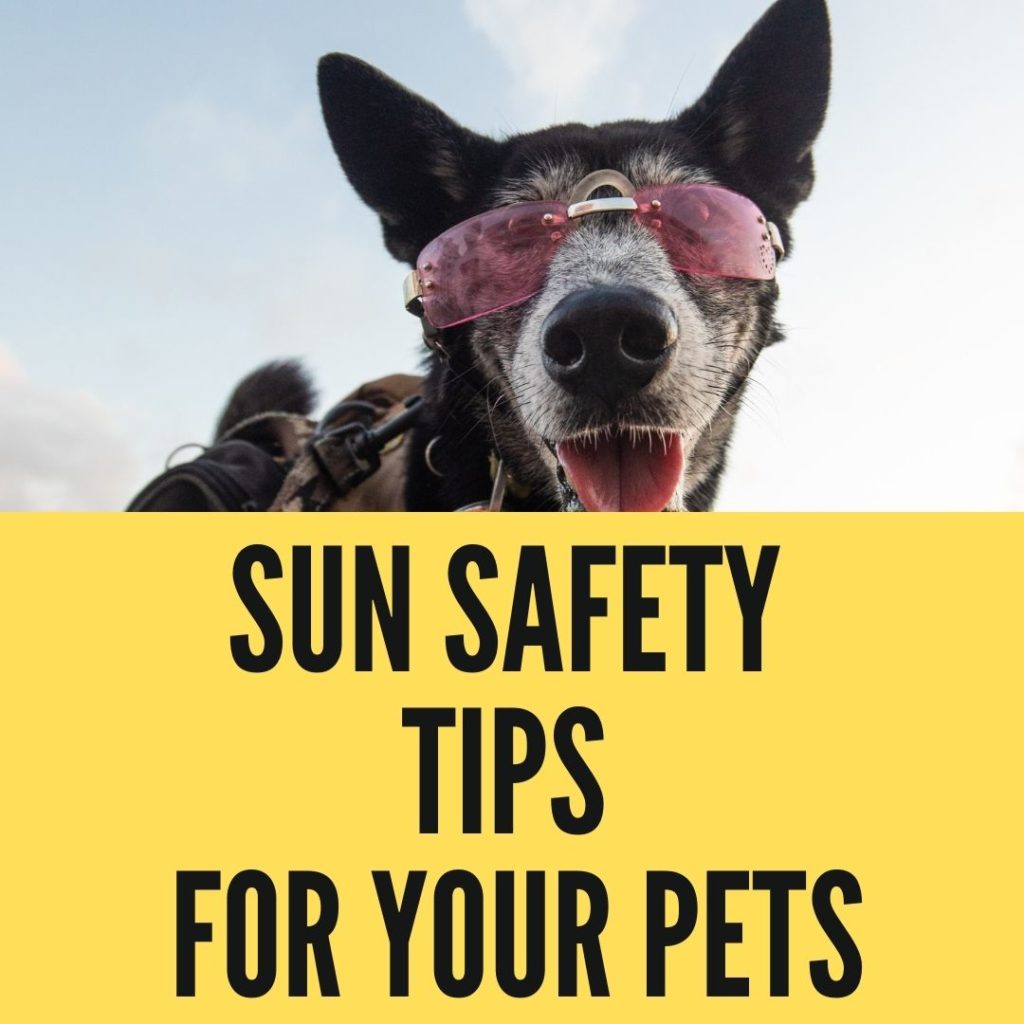How can we protect our pets from the sun? Is the sun bad for my dog? Should I let my dog sunbathe?
During the summer, everyone knows to be careful about spending more time outside.
While you lounge on the beach or hike your favorite trails, you never forget to bring your sunscreen, but how often do you think of your pet? Extreme heat and constant sunshine can hurt animals too, even when fall is just around the corner.
Check out a few easy sun safety tips for your pets that anyone can use to keep their furry best friends comfortable.
1. Limit Their Exposure
Most pets love being outside and need that time to stretch their legs. Daily activity is essential to any pet’s health, but prolonged exposure to direct sunlight is the first danger pet parents can prevent.
Monitor how much time your household pets spend outside. Set a timer or alarm so you remember to bring them inside.
Even though this may shorten the outdoor time they have now, you can always take them back out and repeat the cycles throughout the day.
2. Learn About Dehydration
Like humans, animals become dehydrated when they spend time in the heat. Although the specific signs of dehydration will differ depending on the kind of animal, you can learn about dehydration symptoms and look for bad signs like:
- Loss of energy
- Diarrhea
- Vomiting
- Sticky gums
- Infrequent urination
Your research will show you everything you can keep an eye out for while your pet spends time outside and recovers indoors.
3. Review Heatstroke Symptoms
Animals can also experience heat stroke if they’re outside for a while and have underlying conditions that increase their risk. Again, you’ll have to learn about the specific kind of animal you live with, but some symptoms are common.
Most dogs will exhibit heatstroke symptoms such as:
- Hypersalivation
- Panting
- Rapid heartbeat
- Vomiting
- Seizures
Never leave your pet unattended outdoors when it’s hot or for an extended period.
4. Find Pet Sunscreen
Hairless cats and short-haired dogs sometimes get sunburns because they’re more exposed to ultraviolet (UV) rays than most animals.
If you’re concerned about your pet’s skin, you can find sunscreen designed specifically for dogs and cats.
It’s an extra layer of protection that will help prevent health complications like skin cancer after years of playing outside.
5. Explore New Walking Routes
Your dog may get the most sun exposure during their daily walks.
Depending on where you live, you could explore new walking routes to find paths with more shade.
You might walk down a trail in the woods or switch sides of the street to stay in the shade of roadside trees.
It all helps keep your pet comfortable while they get the exercise they need.
6. Buy New Booties
Even though it might take time for them to get used to the idea, dogs and cats can wear booties outside.
Asphalt and concrete get too hot to touch after extended sunshine exposure, which will burn paw pads.
Booties protect your pet’s feet so they don’t need an emergency vet visit.
You can help your pet walk with them around the inside of your home and time, they’ll use them to walk confidently outdoors.
7. Build a Shady Retreat
Dogs and cats aren’t the only pets that can go outside and need protection. You might take your rabbit or guinea pigs to your backyard too.
Animals of all sizes deserve a place to escape from the sun, so think about building a shady retreat that covers a large section of your yard.
It will double as a shaded play area for your kids or entertainment for households without children. When everyone gets more time in the shade, life is safer and more enjoyable.
8. Avoid Shaving Your Pet
Long-haired dogs and cats often go to the groomer’s for a shave in the summer. Heavy fur coats make even the slightest heat unbearable, but try not to request a shave close to the skin.
It only exposes more skin to the sun and makes sunburn more likely. Discuss leaving some length on their coat while still drastically reducing the thickness with your groomer. They’ll know which setting to use to find the perfect middle ground for your pet.
9. Read About Sunburn Treatments
Your pet may love to sunbathe in your yard or even just inside the glass doors in your home. If they get a sunburn, learn how to treat it. Talk with your vet regarding any skin or medical concerns they may have about home remedies. They’ll advise whether you can proceed with natural solutions like aloe vera gel or get a topical ointment with a prescription for more severe damage.
10. Splurge on Their Wardrobe
Who hasn’t wished they could dress their pet in an adorable outfit? Sun protection may be one of the best excuses to splurge on their wardrobe. Find a light cotton shirt that covers your pet’s back and neck.
It’s light enough to remain breathable in the heat while offering protection from the sunshine. The trick is to never go too heavy with the clothes, so avoid jackets and any kind of sleeves or pants until cold weather becomes the seasonal norm.
Don’t Lose Steam
Adjusting your routine or strapping a pair of boots on your pet before every outdoor excursion may get tiring, but don’t lose steam.
Every effort to protect them will ensure their health and comfort. Learn about dehydration symptoms, consider a shady retreat and think about how you can continue to protect your pet while they enjoy the outside world.
You May Like These Articles As Well:

